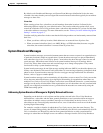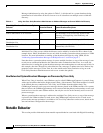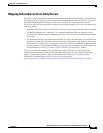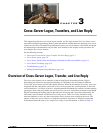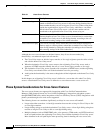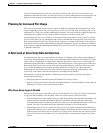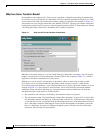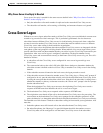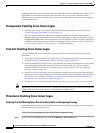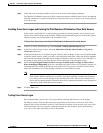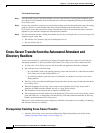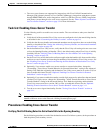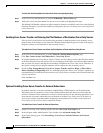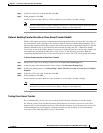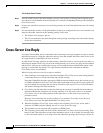
3-5
Networking Guide for Cisco Unity Release 5.x (With Microsoft Exchange)
OL-13844-01
Chapter 3 Cross-Server Logon, Transfers, and Live Reply
Cross-Server Logon
Why Cross-Server Live Reply Is Needed
Cross-server live reply is needed for the same reasons detailed in the “Why Cross-Server Transfer Is
Needed” section on page 3-4:
• Only the subscriber call transfer number is replicated to the networked Cisco Unity servers.
• The subscriber call transfer, call screening, call holding, and announce features are ignored.
Cross-Server Logon
Without cross-server logon, subscribers need to call the Cisco Unity server on which their accounts were
created to log on and access their messages. This is particularly problematic for sites that move
subscribers between different Cisco
Unity servers for load balancing, because each time a subscriber
account is moved to another Cisco
Unity server, the subscriber must be notified to access a different
Cisco
Unity server when calling in from outside the organization.
Cross-server logon solves the problem when the networked Cisco Unity servers are integrated with the
same phone system and grouped in a dialing domain. When enabled, cross-server logon allows you to
provide subscribers with one phone number that they can call to log on to Cisco
Unity from outside your
organization. After cross-server logon is configured, subscribers call the pilot number for one
Cisco
Unity server and are transferred correctly to their home Cisco Unity server to log on. The call is
handled as follows:
1. A subscriber calls the Cisco Unity server configured for cross-server logon and logs on to
Cisco
Unity.
2. The conversation looks up the caller’s ID in the SQL Server database to determine whether the
subscriber account is homed on the local Cisco
Unity or another Cisco Unity server in the dialing
domain.
• If the subscriber account is homed on the local server, the logon proceeds as usual.
• If the subscriber account is homed on another server, Cisco Unity plays a “Please wait” prompt (if
configured to do so), puts the subscriber on hold, and calls the subscriber home Cisco
Unity server
by using the same port that the subscriber called in on. Note that if the subscriber is calling from a
number that matches a primary or alternate extension, the “Please wait” prompt is the first prompt
that the subscriber hears.
When the destination Cisco Unity server answers, the originating Cisco Unity server sends a
sequence of DTMF tones that identifies the call as a cross-server logon.
3. The destination Cisco Unity server responds with a sequence of DTMF tones.
4. The origination server hands off the call to the destination Cisco Unity server for processing. The
conversation on the destination Cisco
Unity server prompts for the subscriber password. At this
point, the behavior is as though the subscriber had called the destination Cisco
Unity server directly.
The intended use of this feature is limited to subscribers calling in from outside your organization. Also
note that:
• Subscriber phones must still forward calls to the subscriber home Cisco Unity server.
• On subscriber phones, the “Messages” or speed-dial button that dials the number to access
Cisco
Unity must still be configured to call the home Cisco Unity server of the subscriber.



